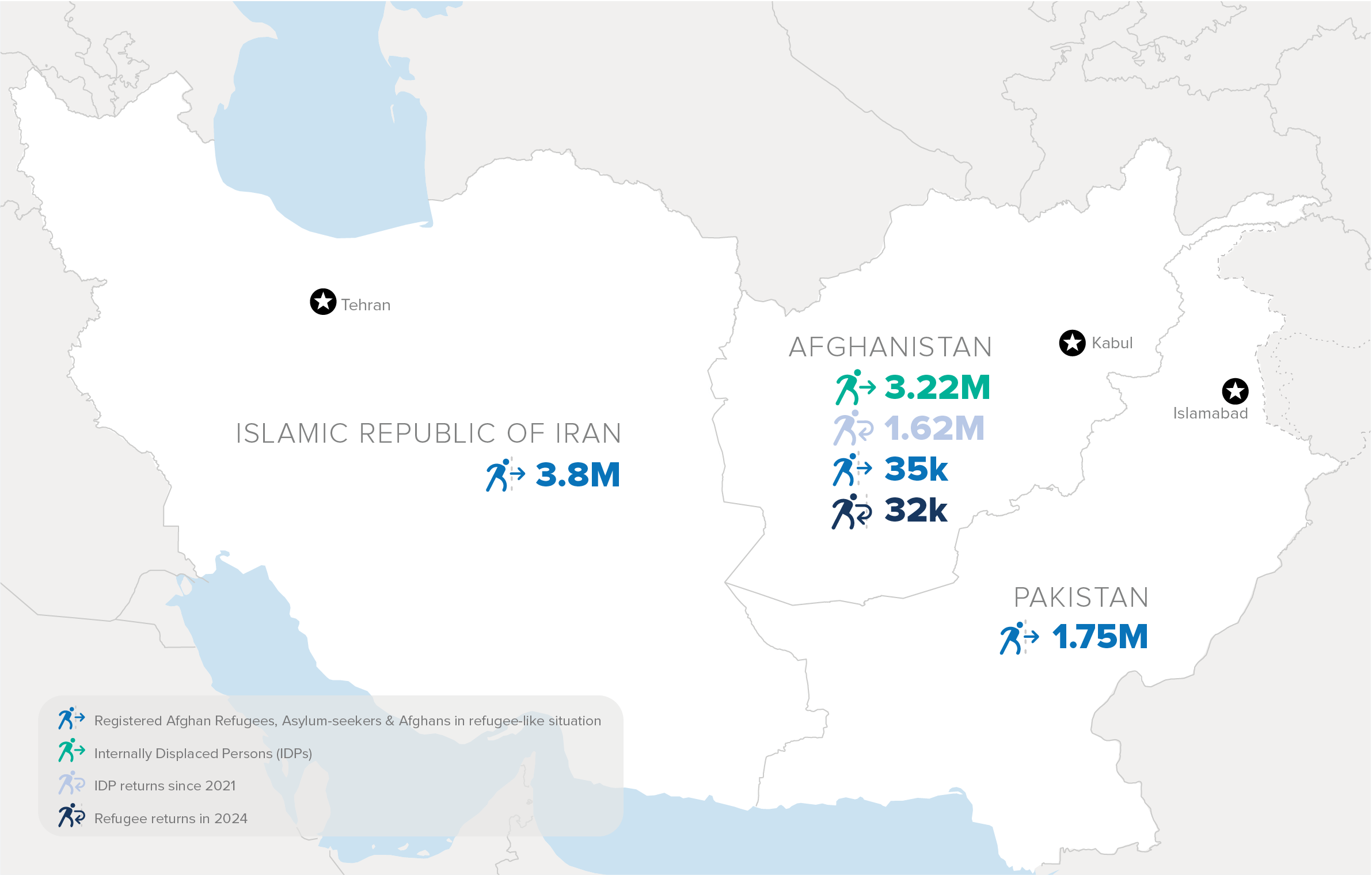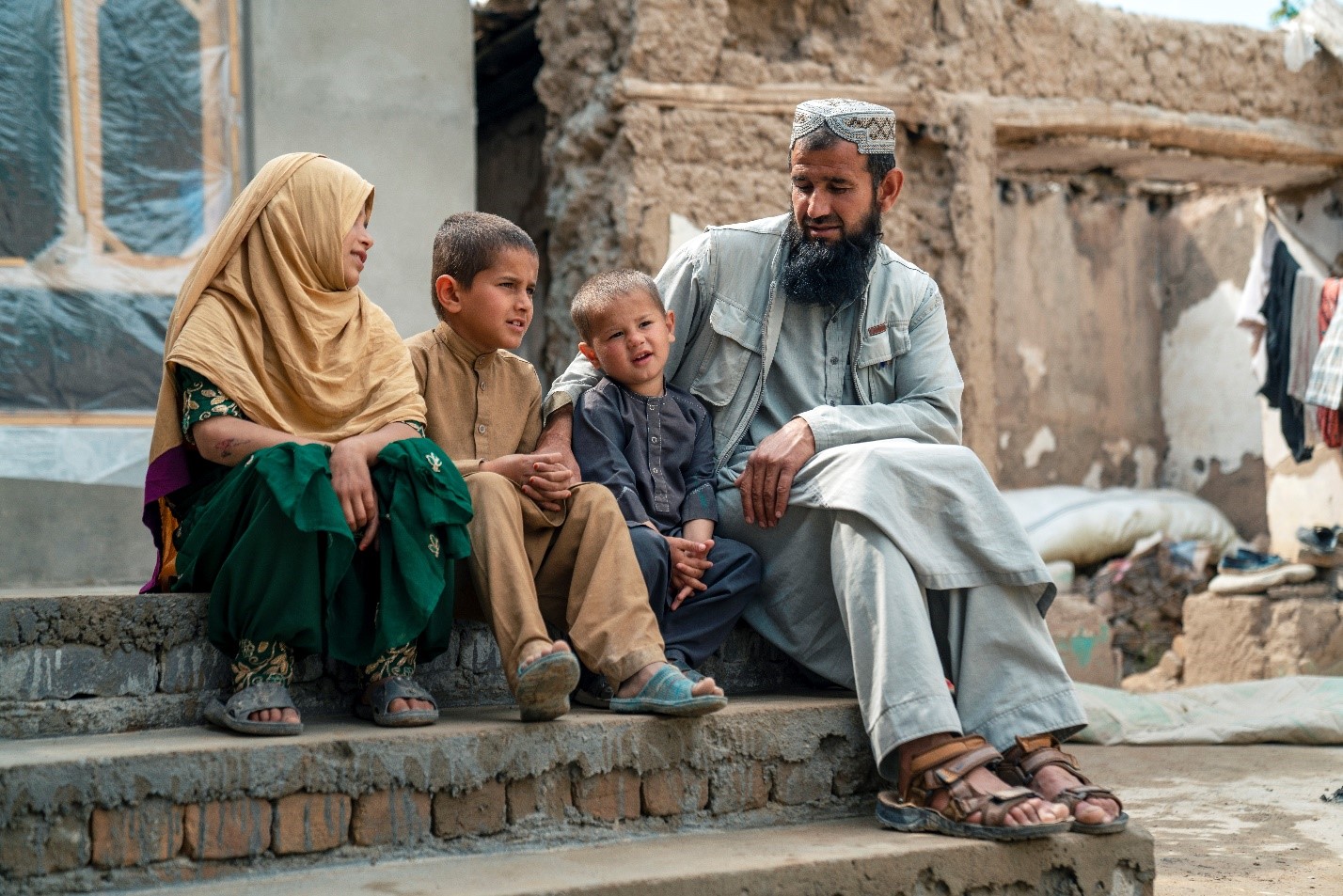Regional Overview

In 2024, the humanitarian and human rights situation inside Afghanistan continued to deteriorate. A non-return advisory remains in place, pending observance of international human rights norms and standards essential for sustainable and dignified return. Nonetheless, over 159,000 Afghans have returned to the country during the first half of the year from Pakistan. Housing, access to finance, and food assistance, together with the provision of essential documentation and protection services for children, women and girls constitute the principal needs upon arrival to final destinations in Afghanistan. Fostering new economic opportunities for refugees and host communities remains essential for sustainable return, through investments in entrepreneurship, improving market access, and access to Sharia-compliant microfinance.
Afghanistan remains primarily a protection emergency characterized by high-levels of protracted displacement, mine and explosive ordnance contamination, restrictions to freedom of movement, increased risk of gender-based violence (GBV), child labour, early marriage and increased needs for mental health and psychosocial support. The 2024 humanitarian response in Afghanistan prioritizes the comprehensive needs of 23.7 million people, of which 17.3 million will be targeted for assistance. Key priorities include providing food aid, safe drinking water, healthcare, and education; and addressing acute water, sanitation, and hygiene (WASH) needs. The protection of vulnerable groups, especially women, girls, boys and those living with disabilities, remains paramount, involving safe spaces, legal support, psychosocial services, and long-term resilience initiatives.
The situation for Afghans in the neighbouring host countries has become increasingly challenging, with economic fragility reducing livelihoods opportunities, a spiraling cost of living crisis, and rising instances of xenophobia. Since 2021, over 1.6 million Afghans have sought safety and protection in Iran and Pakistan, adding a significant additional burden to the two host countries which now host over eight million Afghans. As Afghans become the largest refugee population globally this year, surpassing Syrian nationals, the principal host countries who have hosted Afghans for decades need to be adequately supported. The sub-region needs continued and increased assistance in line with the Global Compact on Refugees and the Solutions Strategy for Afghan Refugees (SSAR).

The Islamic Republic of Iran is currently the largest refugee-hosting country in the world, with a population of at least 3.4 million refugees and refugee-like individuals, including over one million who arrived since 2021. While limitations in State service delivery have become more acute, Iran has continued to extend its inclusive health and education policies to all 4.5 million Afghans residing in the country and is issuing Smart ID Cards to the head counted population, providing regularized documentation, and facilitated access to services. Equally, reflective of a contracting economic situation and tensions between refugees and the host community on perceived labour market competition, up to 320,000 Afghans have returned to Afghanistan – with an estimated 30 percent subsequently re-entering Iran.
The Islamic Republic of Pakistan hosts some two million refugees and refugee-like individuals. Following the October 2023 endorsement by Pakistan’s national Apex Committee of a plan to repatriate over a million foreigner nationals without valid documents, 683,400 Afghans, mostly those undocumented, returned as a result of pressure and fearing arrest. Returns steadily increased from March this year, peaking in May and June, with approximately 38,000 returns each month. RRP partners continue to highlight the risk of returns from either Pakistan or Iran, which are not voluntary in nature. Women and girls, journalists, musicians, artists, and ethnic minorities, in view of the human rights situation in Afghanistan, are particularly at risk.
There is a small window of opportunity to ensure that neighbouring host countries are adequately supported to continue hosting millions of Afghans. The alternatives include the continued destabilization of displaced populations and a risk of onward movements as the humanitarian and human rights crisis in Afghanistan continues. In support of protection, resilience, and solutions, RRP partners continue to work through government systems wherever possible, supporting national authorities’ efforts to maintain and strengthen those systems in the spirit of responsibility sharing. A total of fifty-one partners. 13 UN agencies, 19 INGOs, and nineteen local civil society organizations, with budgetary requirements of USD 620.4m this year, aim to reach a total population 7.3m, including refugees and their host communities. At mid-year funding stood at USD156,9m, constituting 25% of overall needs.
Further information on the Afghanistan Situation response can be found here:
Afghanistan Situation Regional Refugee Response Plan 2024-2025
Afghanistan Humanitarian Needs and Response Plan 2024